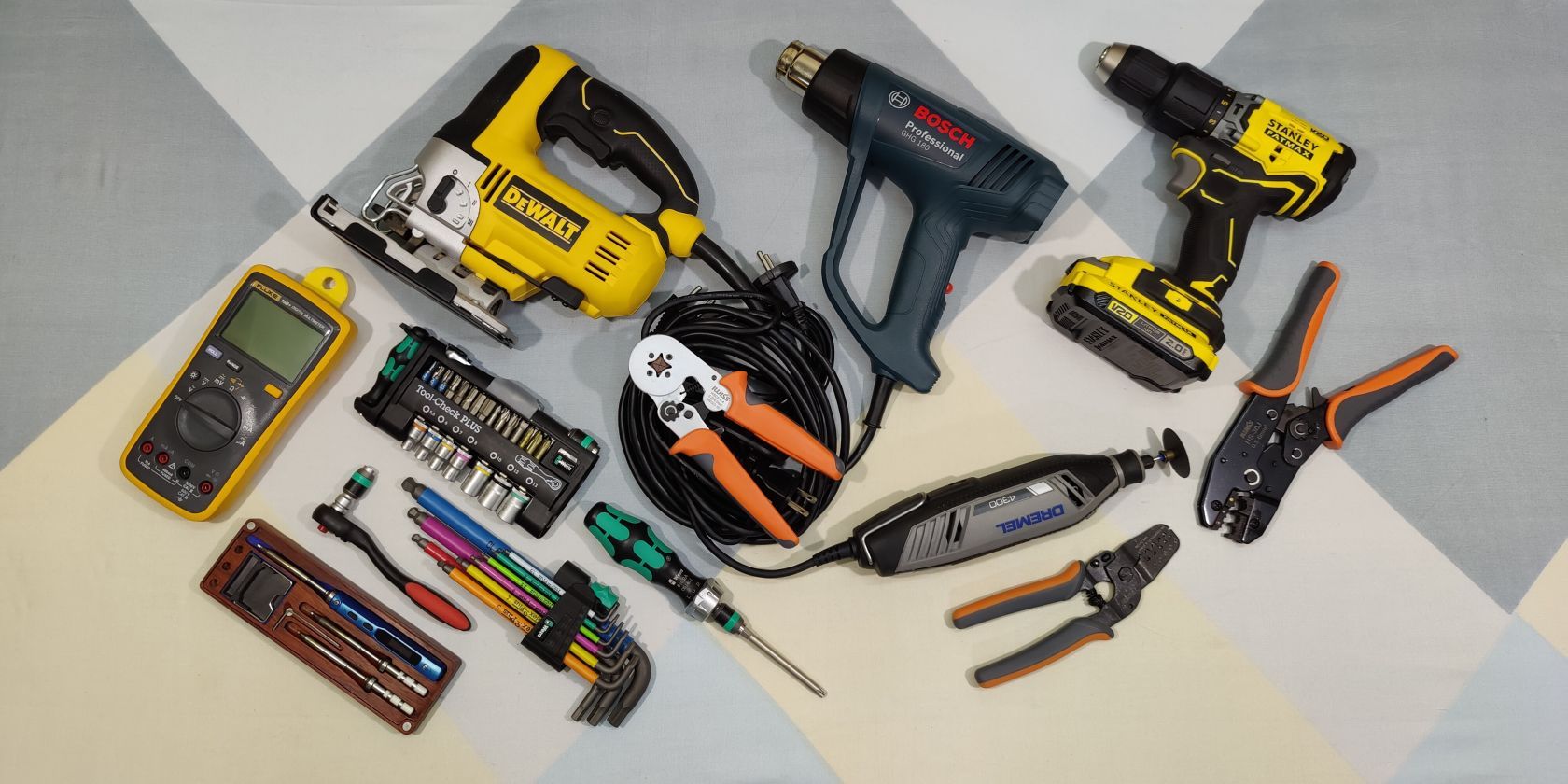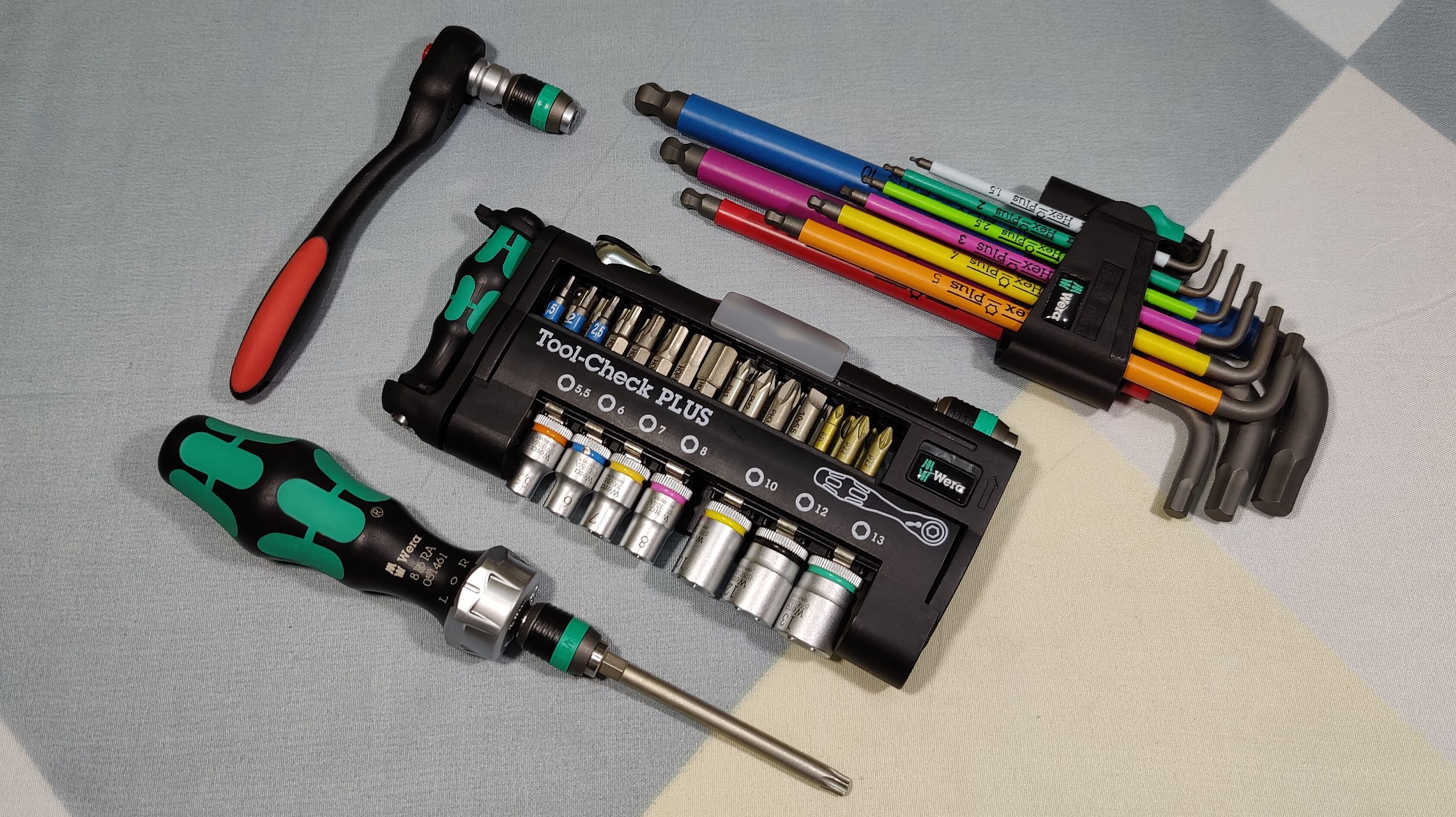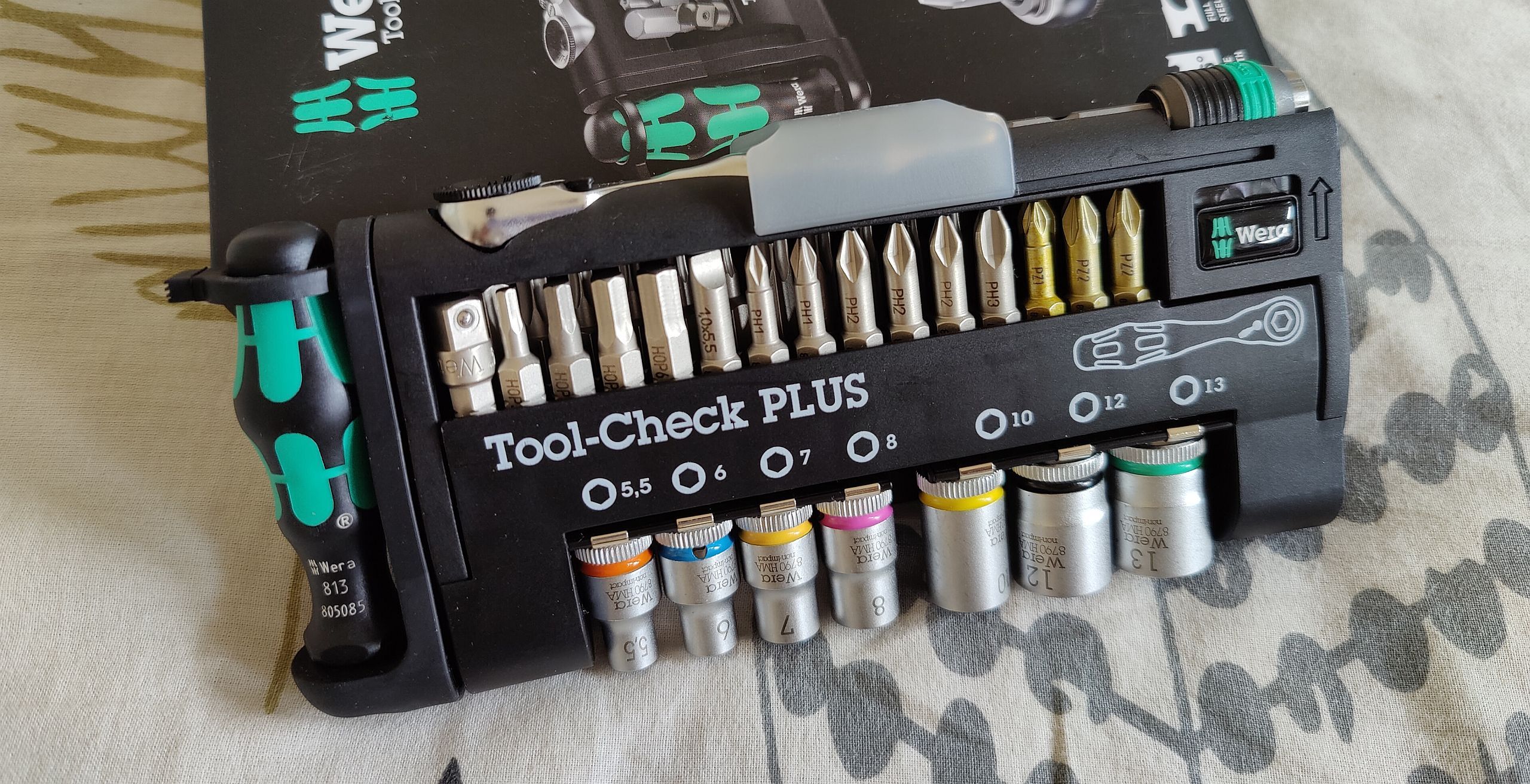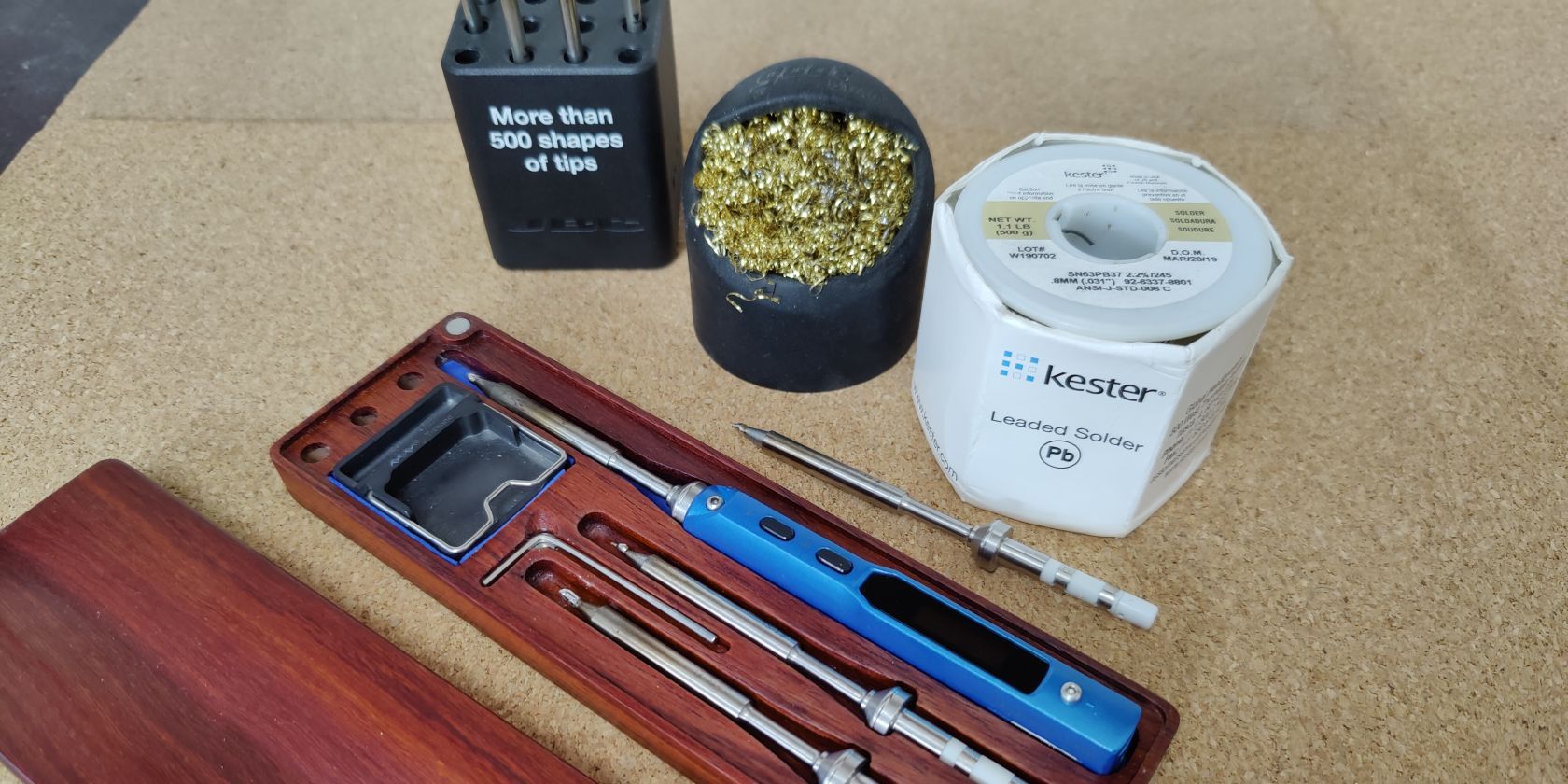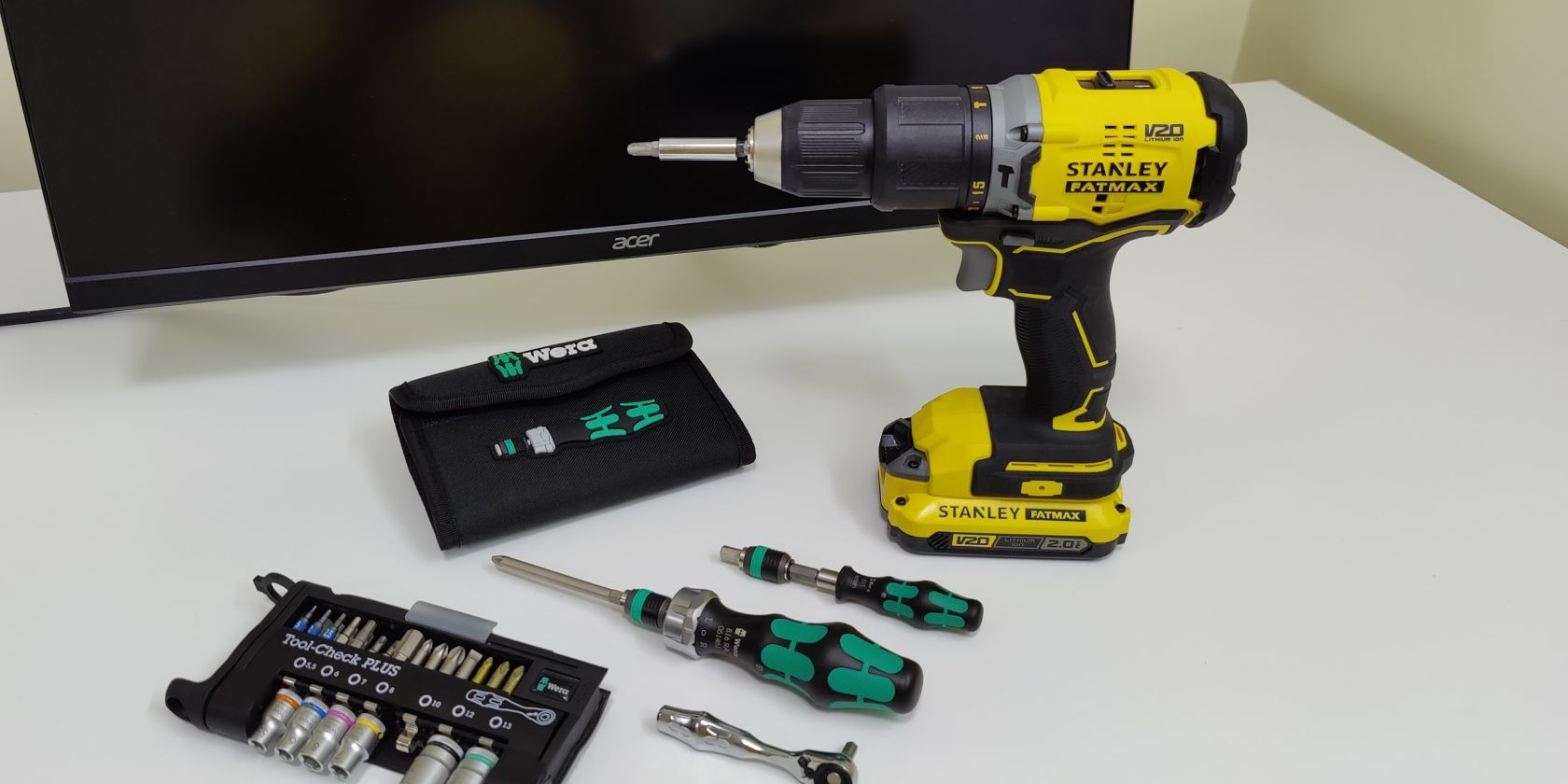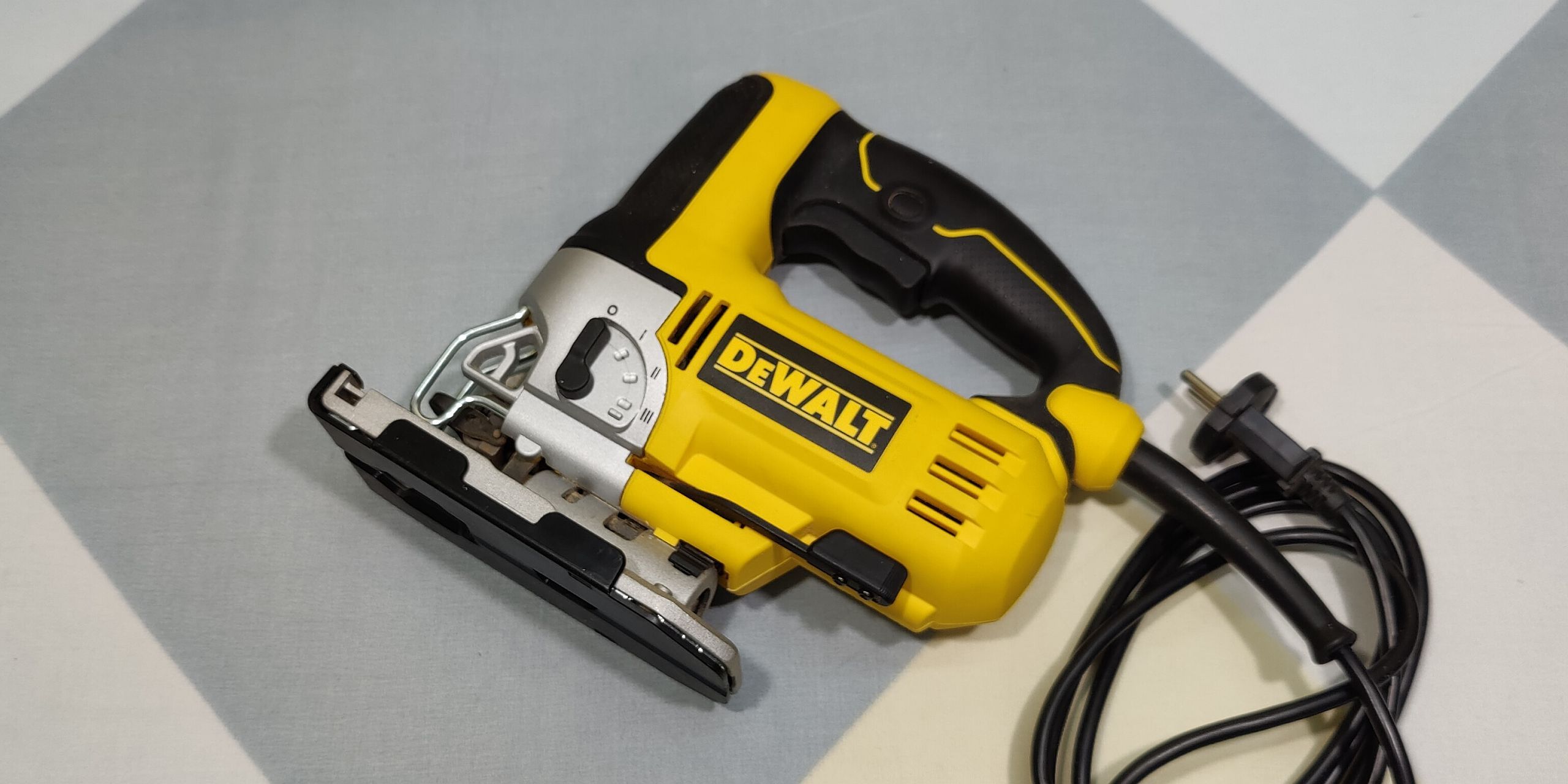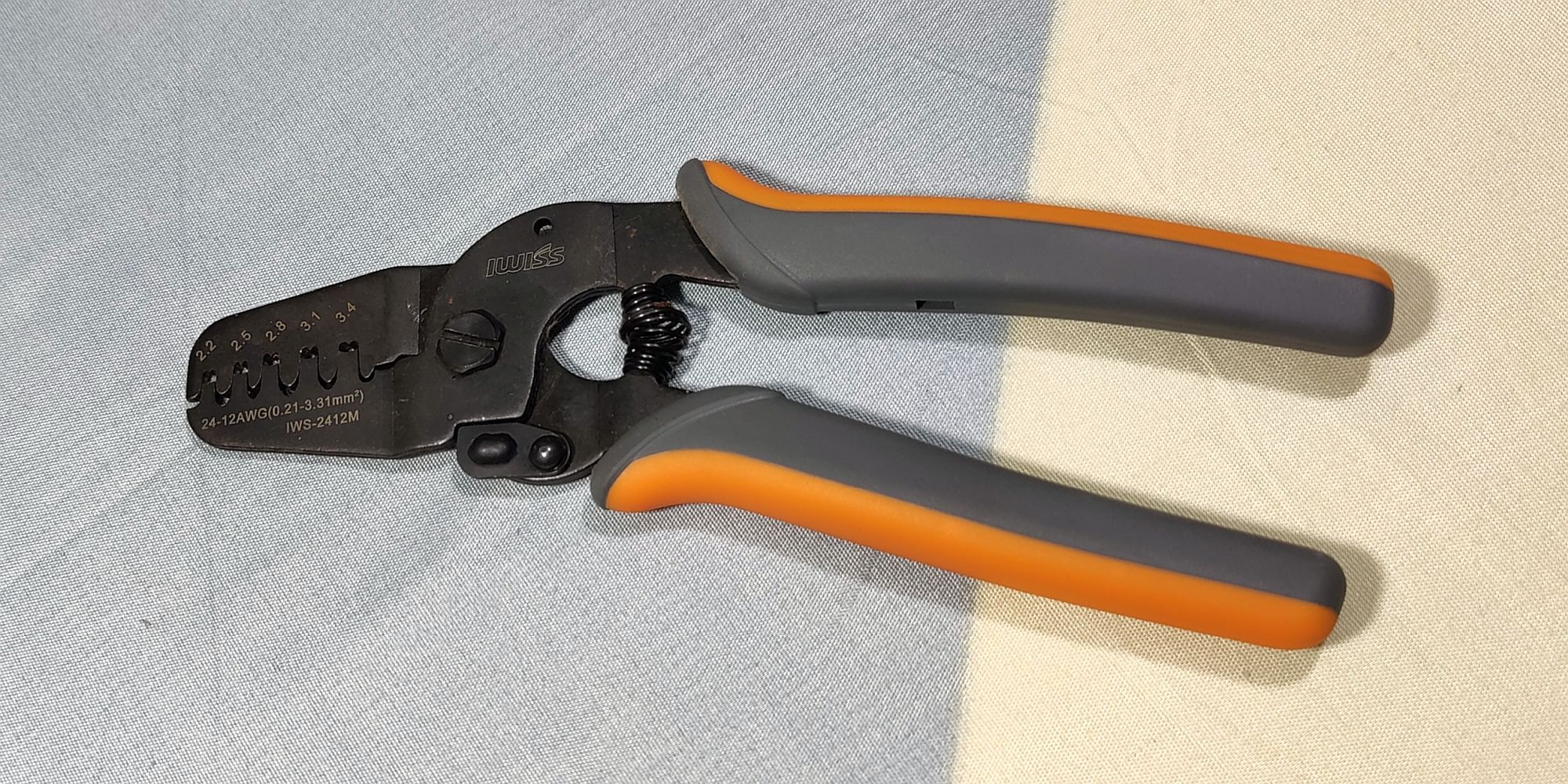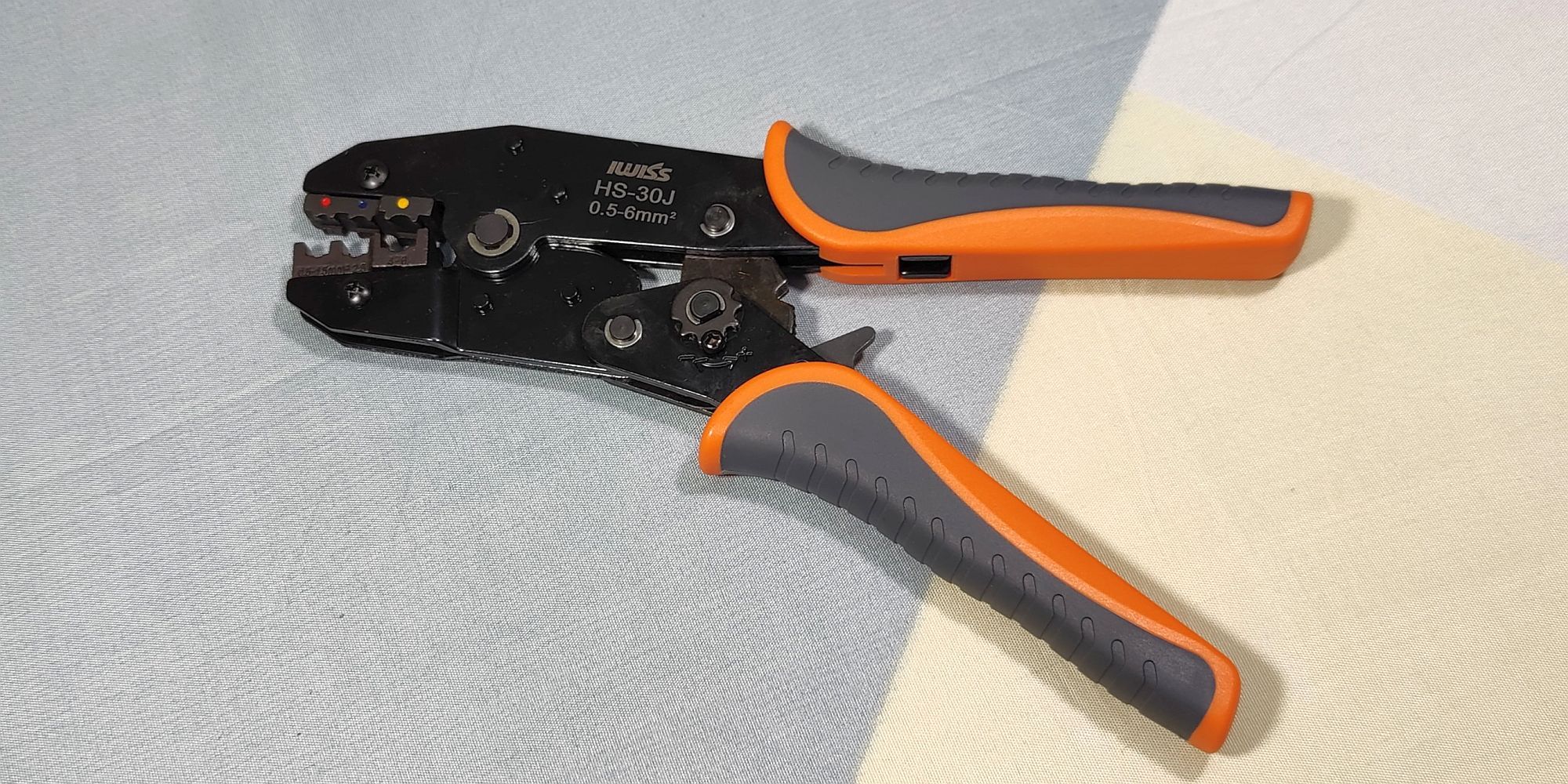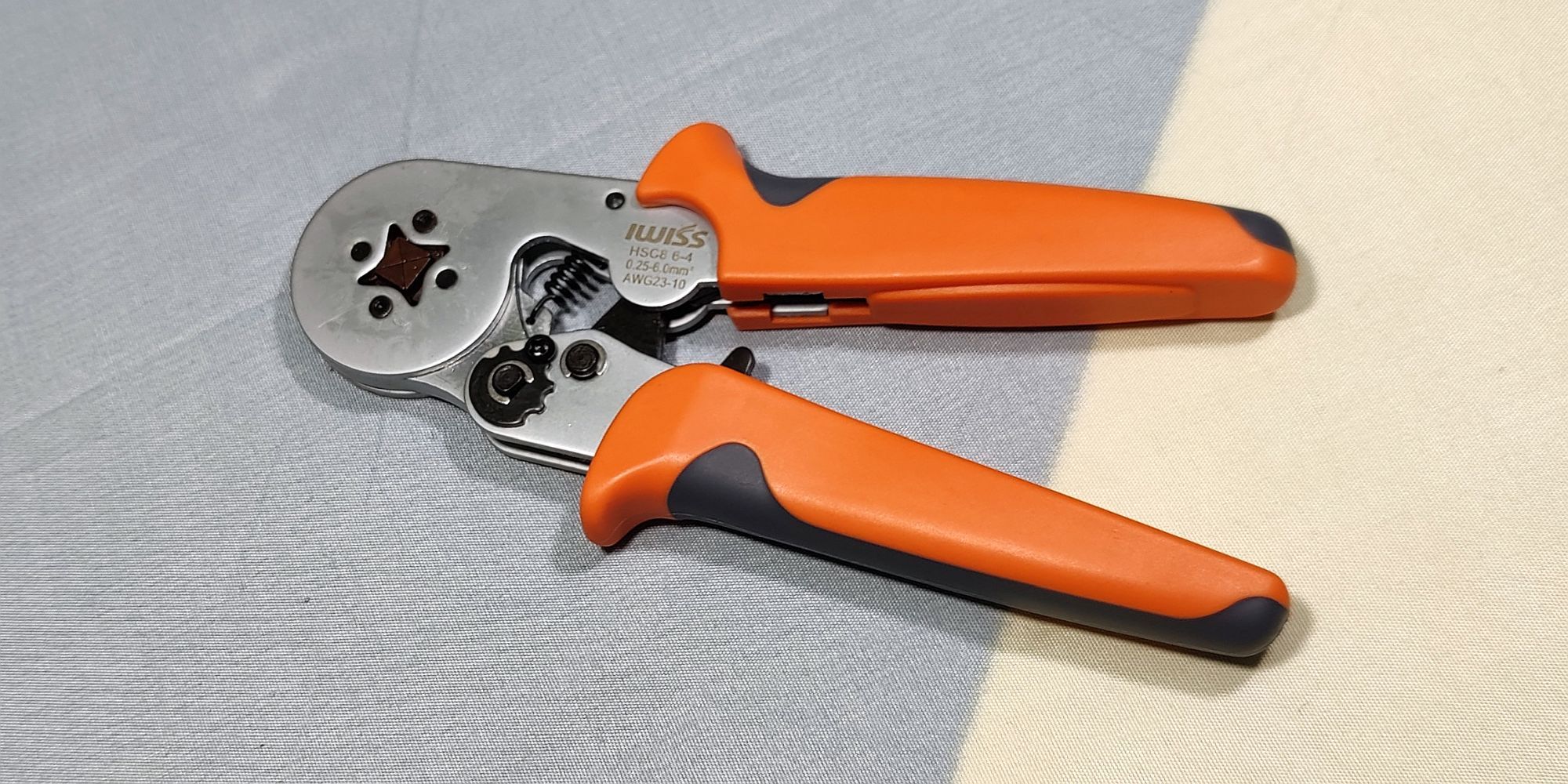On your journey as a maker, you will encounter tools that are indispensable. You will also find those that justify themselves by making life much easier. And then there are tools that are absolutely useless for your specific needs.
Most seasoned makers populate their toolboxes through an expensive and painstaking process fueled by first-hand experience gleaned over the years. But there has to be a cheaper way to choose the most important tools right off the bat, right? Read on to find out the absolute must-have tools for any budding maker.
1. Screwdriver Set
You are bound to come across fasteners no matter which hobby you pursue. Naturally, you won’t make it far as maker without a decent screwdriver set. You don’t need much beyond the basic Phillips, Robertson (if you’re Canadian), and slotted-head screwdrivers for woodworking and electrical work. A basic 8-piece screwdriver set is a good starting point.
However, RC/3D printing hobbies and precision electronics warrant a dizzying array of drivers spanning hex, Torx, pentalobe, Pozidriv, and more. Therefore, it’s wiser to purchase screwdriver sets incorporating a universal handle that fits multiple drive bits. The iFixit Manta Driver Kit includes virtually all the drive bits you’ll ever need in 1/4-inch and 4mm form factors.
If your application also calls for a socket driver, the Wera Tool-Check Plus incorporates an excellent selection of screwdriver bits and most common socket driver sizes. It even comes with a nifty ratcheting driver that doubles up as both a socket wrench and a screwdriver.
Finally, 3D printing and RC hobbyists dealing with a large amount of machine screws should consider reading our cordless screwdriver guide to learn how these specialized power tools can save you a lot of time and effort.
2. Soldering Iron
Whether you are a cosplayer or quadcopter enthusiast, you’re bound to reach an impasse where soldering is the only solution to a particular problem. Fortunately, you don’t have to spend a fortune on a PACE ADS200 or JBC Tools soldering station. Just refer to our handy soldering iron buying guide to know what to look for in an ideal soldering iron at your budget.
The PINECIL smart soldering iron costs a bit more than $25, but it has the power and precision to outperform significantly more expensive soldering stations from the likes of Hakko and Weller. Just be sure to refer to our soldering basics guide to learn the importance of using quality solder, flux, and tip cleaner.
3. Digital Multimeter
From testing basic electronics components and household electrical outlets to diagnosing car troubles, a digital multimeter is an indispensable tool for anything electrical or electronic in nature. The Fluke-101 digital multimeter should work well for most hobbyists. It has auto-ranging functionality, and is backed by Fluke’s spotless track record for manufacturing quality and safety features.
Hardcore electronics enthusiasts might need additional features, such as current measurement or graphing and true-RMS capabilities. But at that point, you’re likely to already own a basic multimeter and know how to use it. For those who don’t, now would be a good time to check out our excellent introduction to multimeters.
4. Drill Driver
Making holes is central to practically all DIY hobbies. While a regular corded drill has the power to handle everything from masonry to tough concrete, most makers are better off with the versatility and portability of a modern cordless drill driver. The brushless varieties are powerful enough to drill through concrete, while also incorporating a clutch to double up as a cordless screwdriver.
If that sounds confusing, our cordless drill explainer is great for understanding these concepts. Cordless drills from brands such as Makita, Milwaukee, and DeWalt are heavy-duty machines that will last you a long time. However, hobbyists seeking light-duty tools can save some cash by opting for alternatives from Ryobi and Bosch (green branding). Just be sure to choose 18-volt drills for optimal performance.
5. Cutting Tools
You can’t build anything without first cutting material down to size. Owning a hand tool such as a saw is the bare minimum, but most DIY projects are nigh on impossible without power tools. The powered variety comes in various forms ranging from jigsaws and reciprocating saws to angle grinders and miter saws. Choosing the right tool depends on your particular application.
Angle Grinder
Angle grinders, for example, are indispensable if your DIY project involves metal fabrication. The high-speed cutting disc in this tool relies more on friction to cut through the hardest of metals.
Reciprocating Saw
A reciprocating saw, on the other hand, is ideal for home improvement and remodeling work. It can cut through metal, plastic, and wood alike, but the form factor is especially suitable for cutting through drywall and wall studs.
Jigsaw
Woodworking, however, throws a lot of confusing options at your disposal. A jigsaw, circular saw, and miter saw can all do the same task of cutting wood, but they all have radically different approaches to the task.
For example, the jigsaw may cut curves and circles into plywood and MDF sheets, but it cannot cut through thick hardwood. Cutting absolutely straight is also impossible with a jigsaw. It’s a tool best reserved for cutting complicated shapes.
Circular Saw
You’re better off using a circular saw for cutting in straight lines. This tool not only has the power to slice through thick hardwood, but it can also cut through tile and marble with the appropriate blade. A circular saw’s ability to follow guides and cut cleanly makes it ideal for dimensioning large plywood sheets and lumber.
Miter Saw
The miter saw is essentially an articulated version of the regular circular saw. It is perfect for dimensioning 2x4 lumber, or other repetitive cutting tasks encountered while making cabinetry and other furniture. The tool comes with requisite clamping mechanism and provisions for making cuts that are both accurate and repeatable. That’s why it is the tool of choice for making wall shelves and 3D printer aluminum frames alike.
6. Heat Gun
From applying heat shrink tubing and insulating cable terminals to softening glue applications in order to take apart home appliances and furniture, the humble heat gun is a must-have tool for any maker. Its applications are quite diverse and span several hobbies. In the PC building space, it is used to soften and bend acrylic tubes for custom liquid cooling setups. Custom cable makers also swear by its capability to shape coiled keyboard cables.
Even if you don’t need it right now, the chances of being left stranded without a heat gun are quite high. You don’t need to buy the most expensive model either. Just be sure to choose one that can reach at least 350 °C. With experience, you can control the effective temperature by moving the nozzle towards and away from the workpiece.
7. Crimping Tools
Buying pre-made cable harnesses will allow you to get by for a while, but eventually you will find yourself with no choice but to crimp your own cables. This is especially important for automotive, RC, and 3D printing hobbies—or rather any equipment that’s subject to vibration. Soldered joints tend to fail in such applications, so crimping all connections is a safety requirement.
There are three primary crimping tools for most electronics, 3D printer, PC building, and automotive projects. The most important one involves crimping JST, DuPont, and Molex connectors. The Engineer PA-09 precision crimping tool covers most common terminal sizes.
Meanwhile, higher current applications call for larger spade, fork, and ring terminals. These require a separate crimping tool. This crimping tool is further bifurcated along insulated and non-insulated varieties, but virtually all hobby projects employ insulated terminals. IWISS makes a great ratcheting insulated crimping tool for this application.
Finally, high current applications such as 3D printers and CNC routers involve power supplies that rely on screw terminals to make electrical connections. It’s safer to crimp bootlace ferrules onto wires meant for this application. The IWISS ferrule crimping tool is ideal for this task.
The Journey to Success Begins With the Right Tools
As you mature in your particular niche, you will find niche tools that fit your particular requirements and style. But until then, the tool types mentioned above are fundamental to the success of most makers across various disciplines.

